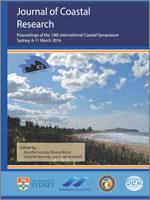Monteiro, S.M. and Robrini, M., 2016. Salinity variation in the macrotidal mixing zone: the Paracauari River estuary, Marajó Island (Northern Brazil). In: Vila-Concejo, A.; Bruce, E.; Kennedy, D.M., and McCarroll, R.J. (eds.), Proceedings of the 14th International Coastal Symposium (Sydney, Australia). Journal of Coastal Research, Special Issue, No. 75, pp. 93–97. Coconut Creek (Florida), ISSN 0749-0208.
The objective of this study is to delineate the estuarine zones (Riverine Zone – RZ, under river influence; Mixing Zone – MZ, under marine influence) across different seasonal periods in the macrotidal Paracauari River estuary – Marajó Island (Northern Brazil). We measured salinity (S) and electric conductivity (EC) in the water column using a multi-parameter probe. We also collected data on suspended particulate matter (SPM – gravimetric estimation) along 40 km of the estuary during higher rainfall (660 mm), transitional (260 mm), and lower rainfall (10 mm) periods in 2008. The first sampling station was located at the river mouth (marine domain) and the last sampling station was in riverine domain. Due to La Niña phenomenon, the Paracauari River estuary showed mean EC and S ranging from 256 μS.cm−1 and 0.1, respectively, in the higher rainfall period, to 11002 μS.cm−1 and 6.1 in the lower rainfall period. Maximum SPM concentrations (93.72 mg.L−1) occurred during the higher rainfall period and minimum values (15.49 mg.L−1) occurred during the lower rainfall period. Therefore, RZ (oligohaline, S < 1.0) prevails during higher rainfall period; during the transitional period, an eight km-wide MZ (oligohaline, S = 1.5) is present and the RZ is upstream; in the lower rainfall period, marine waters penetrate as far as 40 km from the mouth, thus characterizing this stretch as MZ (mesohaline, 2.5 < S < 7.5). Hence, the zonation of the Paracauari River estuary is influenced by river waters during periods of higher rainfall rates and by marine waters during periods of lower rainfall rates.





